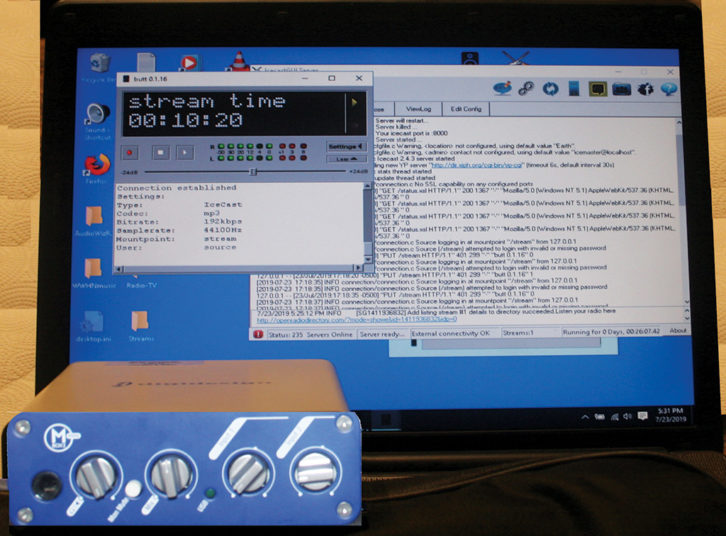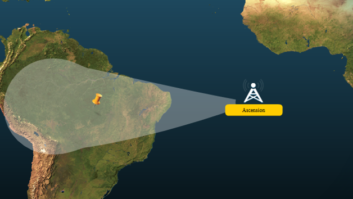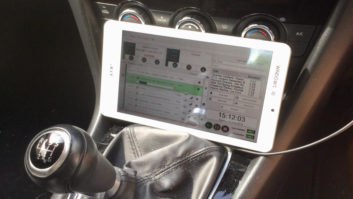It can be a dreaded call: “The STL is down,” or “The stream isn’t functioning.” Usually the goal is to get something back up — fast. It may not be perfect audio, but good (and reliable), and at least you are back on the air. Consultant and projects engineer with Chicago’s Scope+Focus, Len Watson, has been down this road and offers a solution: If you can locate an old computer (desktop, laptop, Windows, Linux) you can put together an audio backup that can be fired up in little time, and for about zero dollars. Translation: You’re a hero to the GM.
For two different clients, Len has found old laptops in storage, and pressed them into backup service. One of these computers is a really old AMD Sempron (see Fig. 1) which actually took Windows 10. Len also converted a Lenova T42 (that’s not a typo) with Windows 10 and it works, too.

Once you’ve secured that computer, head to Icecast and SourceForge and get Icecast 2 and the Icecast GUI and BUTT respectively. Install Icecast, customizing the XML file, changing passwords, etc. Then load BUTT (it stands for Broadcasters Using This Tool); and customize it, selecting the stream rate and format. You’ll also want to enter the same password you gave Icecast.
Note, too, that BUTT will record an archive on the local hard drive if you want. Now, run audio and Ethernet to the computer and you have a cheap standby streamer. Icecast will tell you what the address is, and you can make it public or private.
In short, it will “find its way” to the web. You may have to open a couple of ports in a firewall, but it’s aggressive in getting through. If your back’s against the wall, you’re on the air with just that. If you drag Icecast and BUTT into the startup menu (for Windows, run shell:startup), the machine will begin streaming when it boots up.
Here’s a neat idea for contract engineers. Len has set up an HP ProBook 450G as a loaner/rental for his clients. The equipment pouch includes the computer, power supply, Digidesign Mbox2 audio interface, a couple of Ethernet cables and a number of audio adapters. It kept one station on for about six days.
Of course, you can make it better. Adding a used Mbox2 will improve the sound over an onboard sound card. They’re about $25 to $35 shipped on eBay. Len suggests you don’t buy an Mbox1.
Another tip — changing the name of Kastor.exe to .ex_ will disable Icecast’s internal audio recorder/importer so it won’t go hunting for something to record.
Len also cautions to be prepared for the “Nag Screen” that pops up looking for donations to SourceForge. You can close it out but they’re just looking for 20 bucks. If this kept a station on the air, have the GM send ’em some money — it’s worth it!
If you don’t want a lot of control of the stream — fewer format choices and having to adjust audio with the computer’s software slider — you can go with NCH’s Broadwave Streaming Tool. It will set you up nicely, too. It’s a pay program, but NCH makes a pretty trustworthy suite of audio and video tools.
If you’re using this setup to get your signal to the transmitter, you may want to install a VPN for security, too.
Here’s the SourceForge link: https://sourceforge.net/projects/butt/
The link for Icecast: http://icecast.org/download/
Other helpful links include the Mbox2 driver download page: https://tinyurl.com/8b3gmdc; and the NCH Software Broadwave Streaming Audio Software page: https://www.nch.com.au/streaming/index.html.
Although not designed for full-time use, having one of these set up and ready to go as a backup is cheap, yet invaluable, insurance. Thanks, Len, for the great ideas.
***
Sealing conduit is a must to avoid vermin, water and trash from incursion. Although foam or putty are satisfactory, removing the “plug” to get other wires into the pipe can be messy. Plus, rodents will chew right through the foam unless you include a stainless steel or copper wool component.
Consulting Engineer Charles “Buc” Fitch, P.E. offers another idea especially for unused pipe or conduit — use a pipe stopper. These are cost-effective seals that you insert in the conduit or pipe and when you hand tighten the nut, the rubber gasket expands to seal the opening. Of course, these are ideal when you are capping off an end, because if you have cable entering the pipe or conduit, you will need to carve a small notch in the plastic to permit the cable to pass, but it will keep the rodents and snakes out.
These handy devices can be found at Newman Tools —http://www.newmantools.com/cob/nylon.htm.
But you’ll also find them at the big box stores as well as plumbing suppliers. Buc advises if you buy these plugs locally, to take a small piece of the pipe with you, to insure you get the right inner diameter size.
One last thought from Buc — if you have those metal coax feedthrough ports for coax at your transmitter site, these stoppers are ideal for plugging unused ports, and they are a lot quicker to remove than the rubber boots held in place with a hose clamp!
Contribute to Workbench. You’ll help y our fellow engineers, and qualify for SBE recertification credit. Send Workbench tips and high-resolution photos to [email protected].
Author John Bisset has spent 50 years in the broadcasting industry and is still learning. He handles Western US Radio Sales for the Telos Alliance. He holds CPBE Certification status with the SBE, and is a past recipient of the SBE’s Educator of the Year Award.






